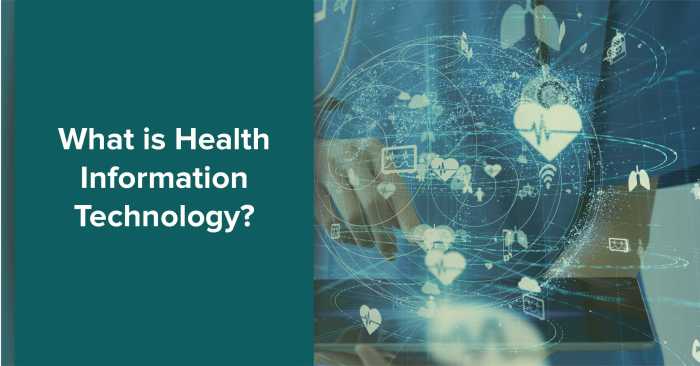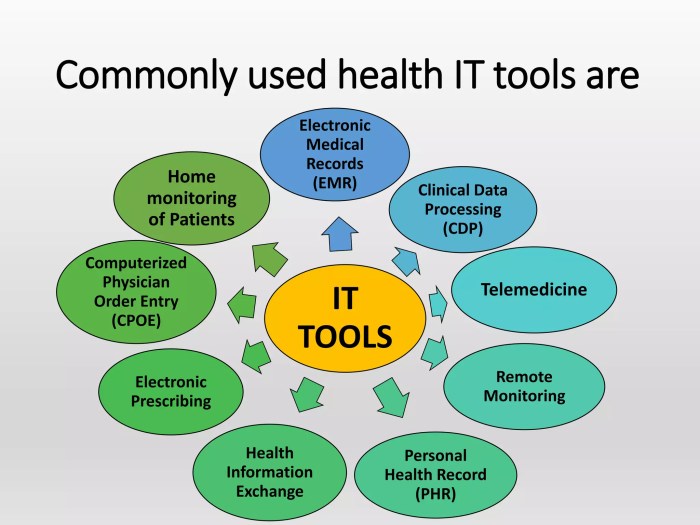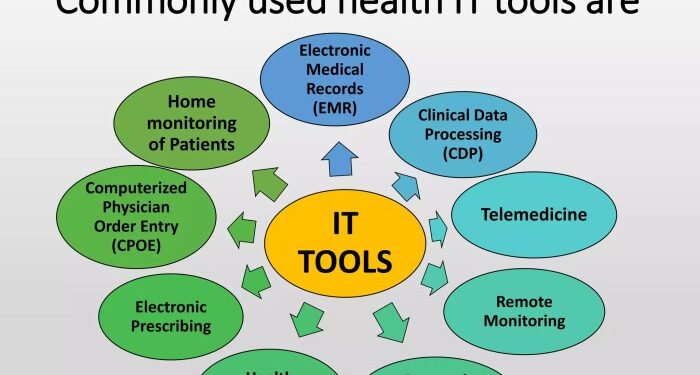Diving into the realm of Health Information Technology and its importance, this introduction sets the stage for a comprehensive exploration of the topic. It aims to captivate readers with a blend of insightful information and engaging storytelling.
The subsequent paragraph will delve into the specifics of the topic, shedding light on various aspects of Health Information Technology and its relevance in today's healthcare landscape.
Understanding Health Information Technology
Health Information Technology (HIT) refers to the use of technology to manage, store, and exchange health information in healthcare settings. It plays a crucial role in improving the efficiency, accuracy, and quality of patient care.
Role of HIT in Healthcare Settings
- Electronic Health Records (EHRs): EHRs store patients' medical history, diagnoses, medications, treatment plans, immunization dates, allergies, radiology images, and laboratory test results in a digital format.
- Health Information Exchange (HIE): HIE allows healthcare professionals to securely access and share patients' health information electronically across different healthcare organizations, improving care coordination.
- Telehealth and Telemedicine: These technologies enable remote healthcare services, such as virtual consultations, monitoring, and diagnosis, increasing access to care for patients in remote areas.
- Health Information Management Systems (HIMS): HIMS help healthcare providers organize, update, and manage health information efficiently, ensuring data accuracy and compliance with regulations.
Importance of Health Information Technology
Health Information Technology (HIT) plays a crucial role in modern healthcare by revolutionizing the way patient information is managed and shared. The implementation of HIT systems has brought numerous benefits to healthcare organizations, ultimately improving patient care outcomes and overall efficiency.
Efficiency and Accuracy
Implementing HIT in healthcare organizations has significantly enhanced the efficiency and accuracy of managing patient records and medical information. Unlike traditional paper-based systems, HIT allows for seamless electronic documentation, which reduces the risk of errors due to illegible handwriting or misplaced files.
Healthcare providers can access patient information quickly, leading to faster diagnoses and treatment decisions.
Components of Health Information Technology
Health Information Technology (HIT) systems consist of various key components that work together to improve healthcare delivery, patient outcomes, and overall efficiency. One of the central elements of HIT is the electronic health record (EHR), which plays a crucial role in storing and managing patient information securely.
Key Components of a Typical HIT System
- Electronic Health Records (EHR): Digital records that contain patient medical history, diagnoses, medications, treatment plans, immunization dates, allergies, radiology images, and laboratory test results.
- Health Information Exchange (HIE): Enables healthcare professionals to access and share patient information electronically across different healthcare organizations.
- Clinical Decision Support Systems (CDSS): Software tools that provide healthcare providers with clinical knowledge and patient-specific information to enhance decision-making.
- Telehealth and Telemedicine: Technologies that allow remote healthcare services, consultations, and monitoring, improving access to care for patients.
- Personal Health Records (PHR): Platforms that enable patients to access, manage, and share their health information, promoting patient engagement and self-care.
Electronic Health Records (EHR) in HIT
Electronic Health Records (EHR) play a critical role in HIT by centralizing patient information, making it easily accessible to healthcare providers, and improving the quality of care. EHR systems help eliminate paper-based records, reduce medical errors, enhance care coordination, and support evidence-based decision-making.
Importance of Interoperability in HIT Systems
Interoperability is vital in HIT systems as it ensures seamless communication and data exchange between different healthcare IT systems and providers. When EHR systems, HIE platforms, and other HIT components can interact effectively, healthcare professionals can access comprehensive patient information in real-time, leading to more informed decisions, improved care coordination, and better patient outcomes.
Challenges and Considerations in Health Information Technology

Implementing Health Information Technology (HIT) comes with its own set of challenges that healthcare organizations need to address. These challenges can range from technical issues to data security concerns. It is essential to navigate these obstacles effectively to ensure the successful integration of HIT systems.
Common Challenges Faced in Implementing HIT
- Lack of interoperability between different systems, leading to difficulties in sharing patient information across healthcare providers.
- High costs associated with the implementation and maintenance of HIT systems, which can be a barrier for smaller healthcare facilities.
- Resistance to change from healthcare professionals who may be accustomed to traditional paper-based systems.
- Data quality issues, such as inaccurate or incomplete information, which can affect the reliability of electronic health records.
Importance of Data Security and Privacy in HIT
Ensuring the security and privacy of patient data is paramount in the implementation of HIT. Healthcare organizations must adhere to strict regulations, such as the Health Insurance Portability and Accountability Act (HIPAA), to protect sensitive information from unauthorized access or breaches.
Failure to maintain data security can result in severe consequences, including legal penalties and damage to the organization's reputation.
How HIT Can Improve Patient Outcomes and Overall Healthcare Quality
The use of HIT can lead to improved patient outcomes and overall healthcare quality in several ways. By streamlining processes and facilitating communication between healthcare providers, HIT can enhance care coordination and reduce medical errors. Additionally, access to real-time patient data allows for more informed decision-making, leading to better treatment outcomes and increased patient satisfaction.
Conclusion

Concluding our discussion on Health Information Technology, this final paragraph summarizes the key points discussed and leaves readers with a lasting impression of the topic's significance in the healthcare industry.
Key Questions Answered
What are the primary functions of Health Information Technology?
Health Information Technology includes tasks such as storing, managing, and transmitting patient health records electronically to improve healthcare delivery.
How does Health Information Technology enhance patient care?
By streamlining processes, reducing errors, and enabling better communication among healthcare providers, Health Information Technology ultimately leads to improved patient outcomes and quality of care.
What role does interoperability play in Health Information Technology systems?
Interoperability allows different healthcare systems and applications to seamlessly exchange and interpret data, ensuring efficient communication and coordination of care.



